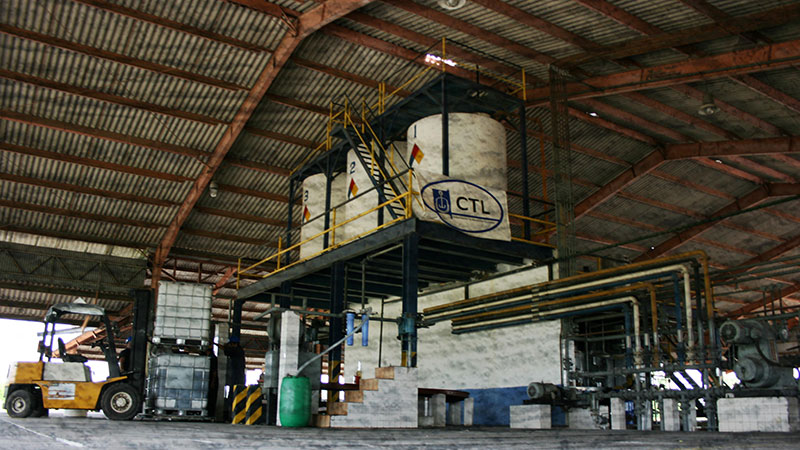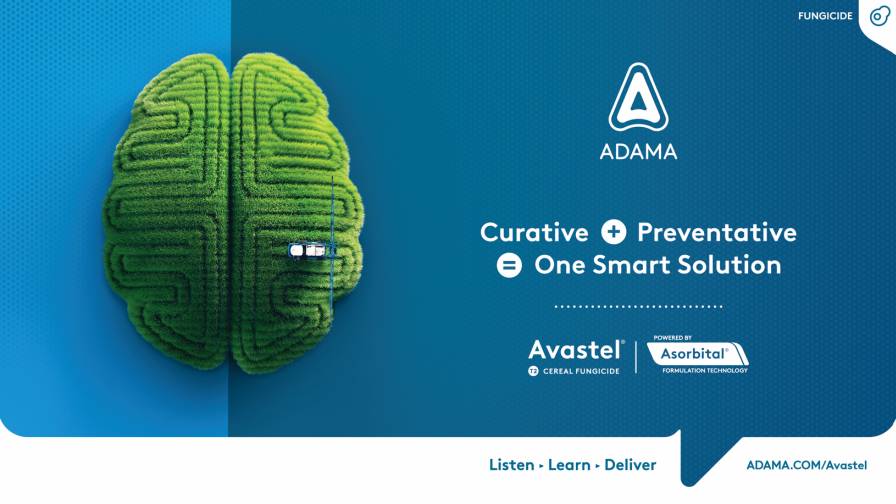Resource Conservation and Recovery Act
The Resource Conservation and Recovery Act (RCRA) of 1976 (as amended) regulates the generation, treatment, storage, transportation, and disposal of solid wastes. The EPA definition of “solid waste” is found in 40 CFR 261, and includes solids, liquids, and contained gases that are discarded, when they are not excluded based on a variance from the EPA or based on one of several recycle/reuse provisions.
Solid wastes are defined as hazardous under RCRA (if they are not subject to any of several exclusions) when they are included in one of the following lists:
F-List – Hazardous wastes from nonspecific sources (40 CFR 261.31). Five wastes from pesticide manufacturing or use, and three from wood preserving processes are included.
K-List – Hazardous wastes from specific sources (40 CFR 261.32). One waste from wood preservation and 22 from pesticide manufacture are listed.
P-List – Acutely hazardous commercial chemical products (40 CFR 261.33[e])
U-List – Toxic and other commercial chemical products (40 CFR 261.33[f]).
Both the P-List and U-List contain several commercial pesticides.
Solid wastes are also hazardous when they meet one of the following defined characteristics (40 CFR 261.21 through 261.24):
- Ignitability (waste code D001) – Based upon the flashpoint of a liquid waste; for a solid, the capability to cause fire through friction or absorption of moisture, and to burn vigorously and persistently; solids that meet the 49 CFR (DOT) definition of oxidizer; and compressed gases that are ignitable under the DOT definition.
- Corrosivity (waste code D002) – Liquid wastes that have a pH of £2 or Š12.5, or that corrode steel at a rate of greater than 0.25 inch per year.
- Reactivity (waste code D003) – Wastes that are unstable and readily undergo violent change; that react violently with water or when mixed with water generate toxic vapors or fumes; that are cyanide or sulfide bearing and can generate toxic gases, vapors, or fumes at pH conditions between 2 and 12.5; that are readily capable of detonation or explosion at standard temperature and pressure if subjected to a strong initiating force or if heated under confinement; or DOT forbidden explosives, Class A or B explosives.
- Toxicity (waste codes D004-D043) – Liquid wastes or the extract from waste solids that fail the Toxicity Characteristic Leaching Procedure (TCLP) analytical test because they contain certain designated metals, pesticides, or organic chemicals at concentrations equal to or in excess of specified regulatory limits.
The following are examples of pesticide wastes which can be regulated under RCRA:
- Discarded, unused pesticides, either as technicals or formulations, that are listed or that meet one or more of the characteristics of hazardous waste. Formulated pesticides that contain more than one listed active ingredient do not currently have to be classified as hazardous waste when disposed unless the formulation (including inert ingredients) meets a characteristic of hazardous waste. This loophole in the regulations is expected to be closed by EPA in the future;
- Discarded residue or rinsate from drums, tanks, or containers depending on the RCRA classification of the pesticide/rinsate;
- Non-empty pesticide containers which held a listed pesticide or held a pesticide exhibiting a hazardous waste characteristic. In the case of pesticides that are acutely hazardous (P-List), containers or inner liners from containers are also acutely hazardous wastes when disposed unless they have been triple rinsed with an appropriate solvent;
- Pesticide residue consisting of contaminated soil, water, or other debris resulting from the cleanup of a spilled pesticide.
Fertilizer wastes can also be regulated in similar ways. A significant exclusion from the RCRA regulations exists for two process wastes generated during the manufacture of phosphoric acid by the wet acid process: phosphogypsum and process wastewater. Thus, neither of these wastes is considered hazardous under RCRA even though they usually exhibit one or more of the characteristics. EPA acknowledges that phosphoric acid production processes and associated wastes pose risks to human health and the environment, and intends to use its TSCA authority to design a specific regulatory program to manage these wastes.
In order to know how such regulated pesticide wastes must be managed, a generator must first determine into which of three classes it falls. (Be aware of the fact that not all states recognize small quantity generators.) The three classes are:
- Generators of no more than 100 kilograms (kg) of hazardous waste or 1 kg of acutely hazardous waste (P-listed commercial chemical products) per month (including no more than 100 kg of clean-up debris from cleaning up a spill of an acutely hazardous waste). This class is also known as “Conditionally Exempt” Small Quantity Generator.
- Generators of 100 to 1000 kg of hazardous waste per month which do not generate more than 1 kg of acutely hazardous waste (or 100 kg of spill clean-up debris) during the same month, and who never accumulate more than 6000 kg on-site.
- Generators of 1000 kg or more of hazardous waste or more than 1 kg of acutely hazardous waste per month.
"Conditionally Exempt” Small Quantity Generator. As discussed above, this category encompasses generators of less than 100 kg of hazardous waste, and less than 1 kg of acutely hazardous waste in any given month. “Conditionally Exempt” Small Quantity Generators must do the following:
- Identify all hazardous waste generated.
- Send this waste to a hazardous waste facility, or to a landfill or other type of facility approved by a state for industrial or municipal wastes.
- Never accumulate more than 1000 kg of hazardous waste. If this amount is exceeded at any one time, a generator becomes subject to all of the requirements for the 100-1000 kg Small Quantity Generator.
- Never accumulate more than 1 kg of acutely hazardous waste or 100 kg of spill clean-up of an acutely hazardous waste. If either of these quantities is exceeded, a generator must follow all of the regulations of the third category of generator – a Large Quantity Generator.
Other Generators. Both the second and third categories of generator are subject to full regulation, although the requirements for the 100 to 1000 kg generator are somewhat reduced. Thus, they must notify EPA that they are a generator, and must obtain an EPA Identification Number. Hazardous waste cannot be stored without an RCRA permit. However, EPA regulations allow storage in containers or tanks without a permit for specified times (see below) under certain conditions. (See 40 CFR 262.34.)
When wastes are stored in containers, the containers must be labeled with the words, “HAZARDOUS WASTE,” and must be marked with the date on which wastes began to accumulate in that container. The containers must be kept closed, must be in good condition, and must be inspected weekly for signs of corrosion, leaks, bulges, etc. When storing hazardous wastes which are classified as either ignitable or reactive, a buffer zone must be maintained from the property line and the containers must be kept away from sources of ignition. Furthermore, care must be taken to prevent mixing of wastes that are incompatible, or that will react to generate extreme heat or pressure, fire, explosion, or that will produce flammable or toxic mists, fumes, dusts, or gases.
As stated above, wastes can also be stored in tanks without a permit under certain conditions. Although similar to the rules for containers, the regulations for storing in tanks are more extensive, and will not be dealt with here.
Small Quantity Generators, i.e., 100-1000 kg/month, must either transport wastes off-site, or treat them on-site, within 180 days. If the waste must be shipped to a Treatment, Storage, or Disposal (TSD) facility that is located more than 200 miles away, then an additional 90 days (270 days total) may be allowed. Large Quantity Generators must either transport wastes off-site, or treat them on-site within 90 days.
Transportation Requirements. Hazardous waste which is to be shipped must be packaged according to U.S. DOT regulations, and each container (drum, portable tank, tank truck, or tank car) used for shipping a hazardous waste must be labeled, marked, and placarded in accordance with these same rules. In addition to any required DOT markings, each container of 110 gallons or less must bear the following legend:
HAZARDOUS WASTE — Federal Law Prohibits Improper Disposal. If found, contact the nearest police or public safety authority or the U.S. Environmental Protection Agency.
Generator’s Name and Address
Manifest Document Number
The discarding of pesticides, residues, and rinsates is usually regulated under RCRA. However, disposal requirements for empty containers are mandated by EPA under FIFRA. These requirements are found in the container disposal instructions on the product label. Note, however, that farmers disposing of waste pesticides from their own use are exempt from RCRA if they triple rinse each container and dispose of the pesticide residues on their own farms in accordance with the FIFRA label instructions.
Once a pesticide, manufacturing process waste, rinsate, or non-empty container is determined to be a RCRA hazardous waste, the waste must be managed in accordance with RCRA requirements.
It is important to realize that some states have RCRA requirements that are more stringent than those of federal RCRA. Some states also have DOT requirements that are in addition to those of federal DOT.
The EPA’s first rules establishing a schedule and implementing the first of the Land Disposal Restrictions (LDRs) were published in November 1986. EPA defined land disposal to include, but not be limited to, any placement of hazardous waste in:
- Landfills;
- Waste piles;
- Injection wells;
- Land treatment facilities;
- Salt domes or salt bed formations;
- Underground mines or caves; or
- Concrete vaults or bunkers, intended for disposal purposes.
The LDR rules were issued in segments over a five-year period, and the first covered solvents and dioxins, then “California List Wastes,” i.e., halogenated wastes, certain metal-bearing wastes, PCBs, cyanides, and corrosive wastes. The restricted wastes were further expanded during this period to include “F,” “K,” “P,” and “U” hazardous waste codes, and finally certain characteristic “D” wastes.
Most listed hazardous wastes have been assigned specific treatment standards by EPA and are restricted from land disposal unless the designated treatment standards are met. Characteristic wastes D001, D002, etc., including the characteristic metal- or pesticide-containing wastes that are hazardous based upon process knowledge and/or the TCLP test data, are subject to the LDRs and must be treated. The treated waste, if it passes the TCLP test, can be land disposed. Some hazardous waste streams, however, are exempt because they become regulated (newly regulated streams) after the LDR rule was passed. These will become regulated in the future.
The LDRs require that the generator know which bans and which treatment standards apply to his waste and also notify the treatment or disposal facility, in writing, that specific LDR treatment standards apply to his wastes. The generator must certify that land disposal of the waste is allowed when the treatment standards are already met. Typically, a disposal facility will provide the waste generator with an “LDR” or “Land Ban” form to complete and sign to fulfill the notification requirement. The generator should keep a copy of this form with the manifest copy.
For some pesticides on the “P” and “U” lists, treatment standards have not yet been developed by EPA. These wastes must be stored at a permitted hazardous waste storage facility until a treatment standard is finalized.






